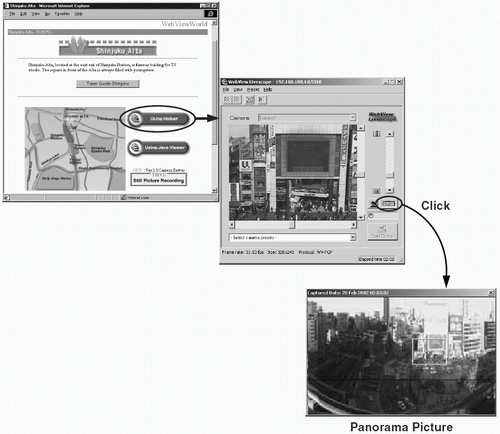To distribute picture data by VB-C10/VB-C10R, you create a dedicated Web page. The viewers that can be used with the VB-C10/VB-C10R are "Java Viewer (with or without camera control function)" and "Helper Viewer", and detailed parameters can be specified for each of these. You need to determine which of these viewers is supported and create the Web page for the viewer.
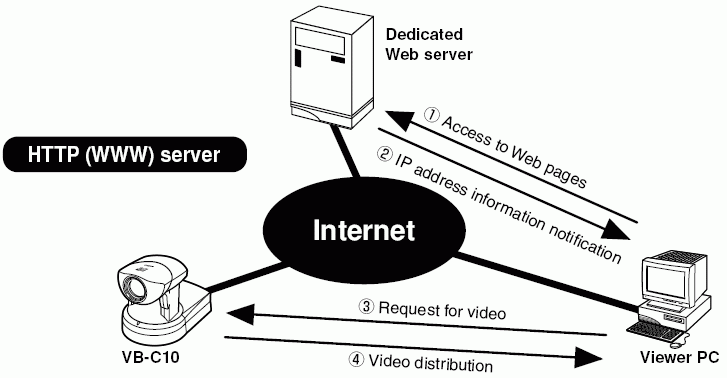
If you select a link requesting video in step 1, a file that includes the IP address information for the VB-C10/VB-C10R is sent from the Web server in step 2. If you are using the Java Viewer, the applet is downloaded to the viewer PC from the VB-C10/VB-C10R in response to the request in step 3 and the video is distributed.
Note
The VB-C10/VB-C10R includes a built-in Web server. If the content of Web pages used for distributing videos is stored onto the flash memory in the VB-C10/VB-C10R, the VB-C10/VB-C10R can be used alone for distributing Web pages and videos over the Web. Please refer to page 5-8 for procedures on how to save Web page data.
Tip
You can use the Language setting function for the Browser to create a multi-lingual Web site. For example, if you set the French-language top page as index-fr.html and the English-language top page as index.html and supply users with a URL address terminates in slash, such as http://vb-c10/sample/, the server will transmit a file that corresponds with the language setting for the Browser. For further information on the Language setting function for the Browser, refer to the Browser Help.
Features of the Java Viewers
These viewers are supplied as Java applets. They run on Web browsers that are Java-capable, such as the Netscape Navigator and Microsoft Internet Explorer browsers. The applets are downloaded from the camera server to the Web browser and are then run by the Web browser. The features of the Java Viewers are described below.
- Video distribution and camera operation using the WebView-HTTP protocol.
- Penetrate firewalls to access external sites.
- Because they are automatically downloaded, the Java Viewers do not need to be pre-installed by the client.
- Java Viewers run on a wide variety of platforms.
Tip
Because the Java applets are downloaded using the HTTP protocol when the viewer starts up, the start up time is longer than the Helper Viewer.
Java Viewer Types
Two Java Viewers are "LiveApplet", which has video display and camera control functions, and "Glimpse", which only has video display functions. Because viewers use WebView-HTTP as the transfer protocol, they do not require special settings to penetrate firewalls.
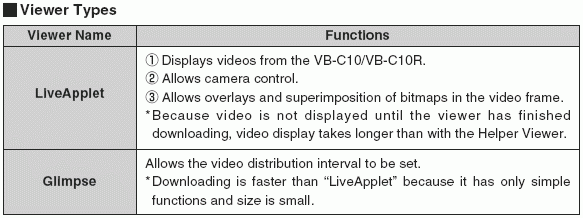
|
Java Viewer
LiveApplet
Video display function Camera control function
|
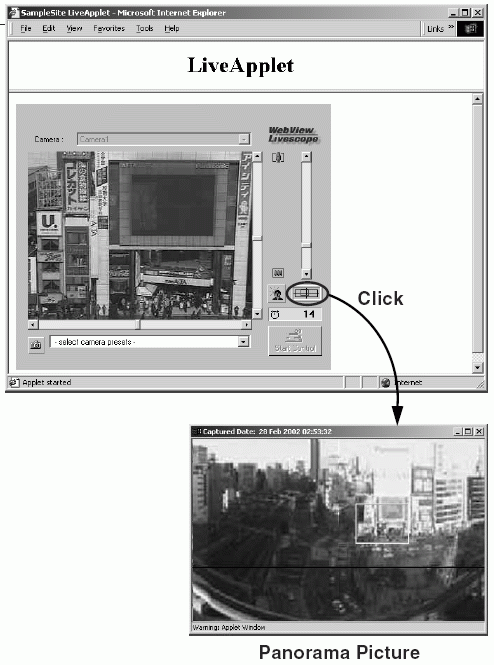 |
|
Java Viewer
Glimpse
Video display function
|
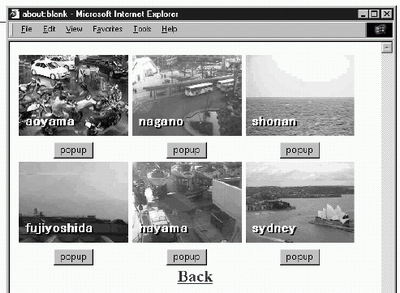 |
Features of the Helper Viewer
The Helper Viewer is an application which is launched from a Web browser. Unlike the Java Viewer, it must be pre-installed on the client's computer. The features of the Helper Viewer are described below.
- Must be pre-installed, but once installed, start-up time is quick and operation is stable.
- The Helper Viewer can use WebView-HTTP protocol and can penetrate firewalls to access external sites. However, this cannot pass through with the WebView-TCP protocol
- Can be run as a stand-alone application.
